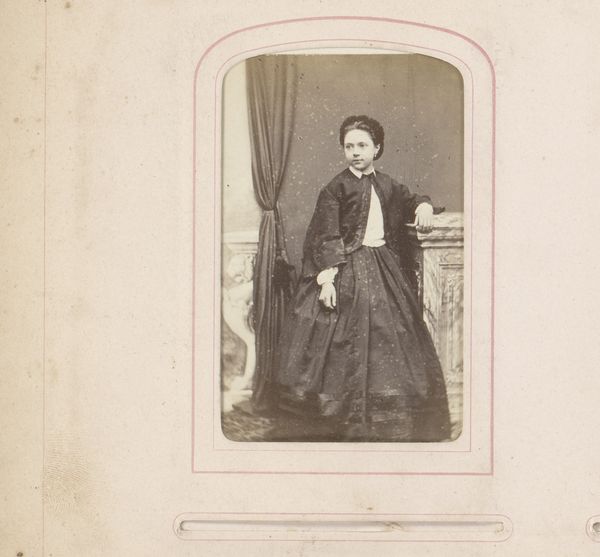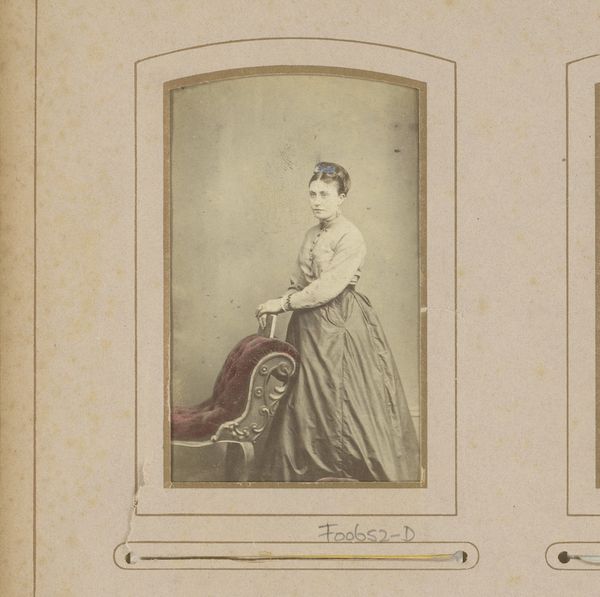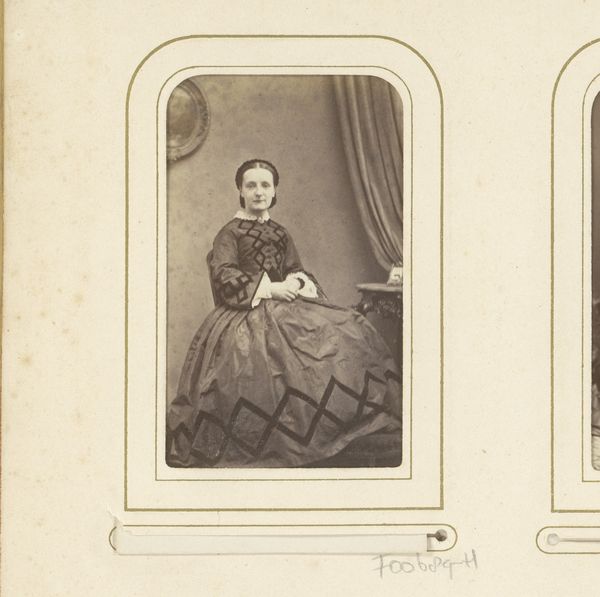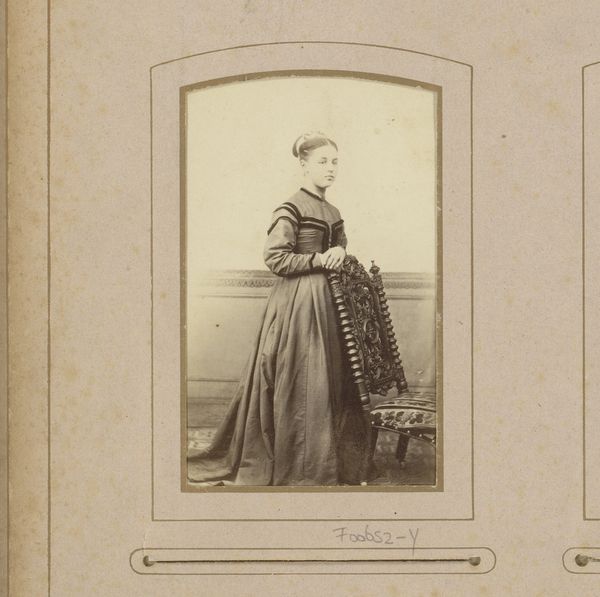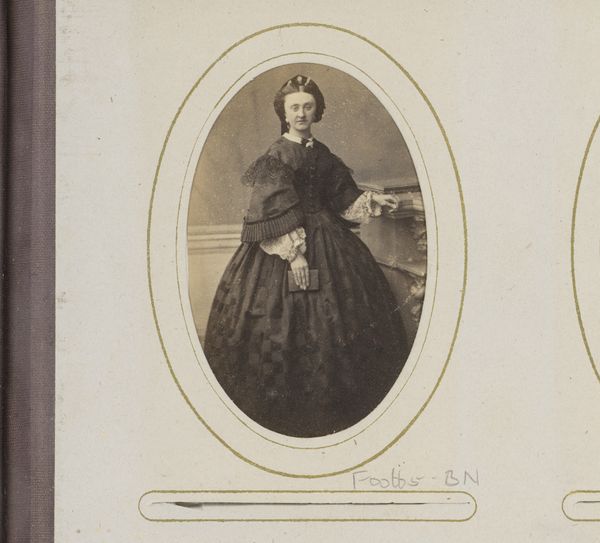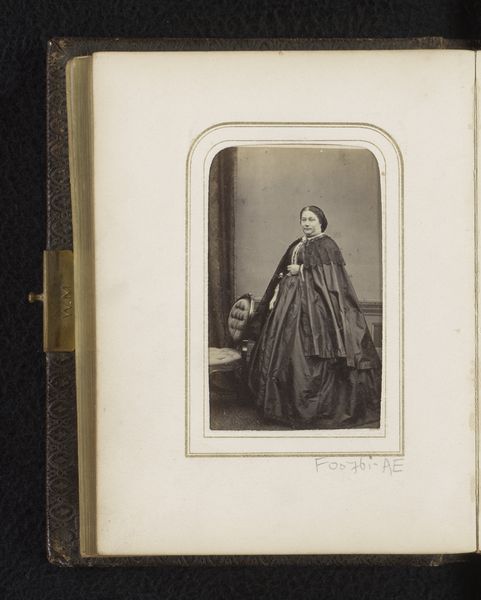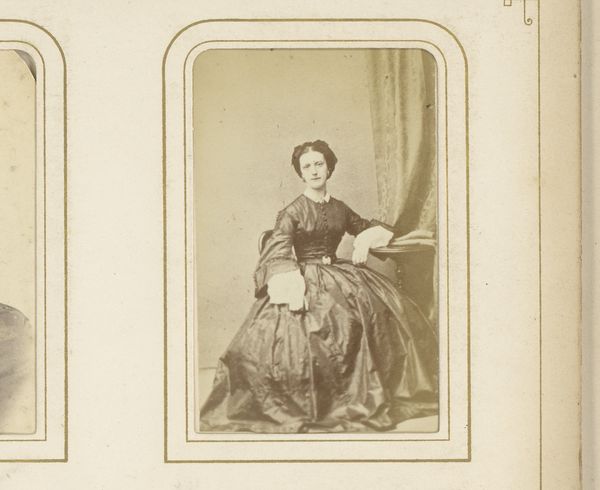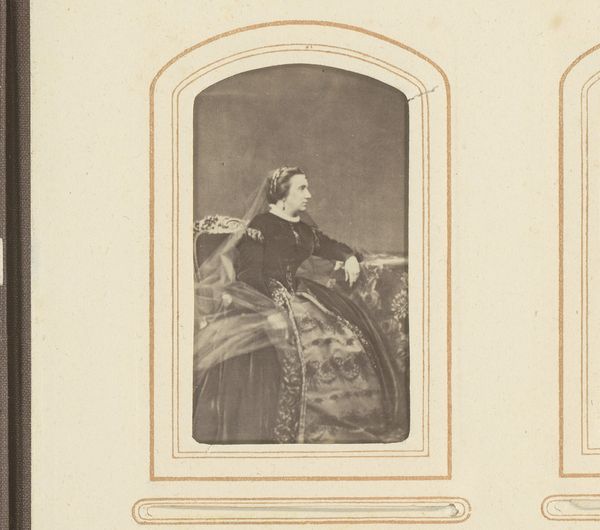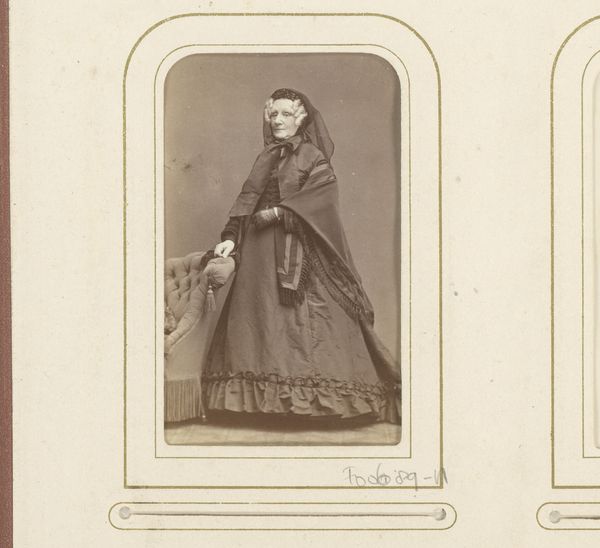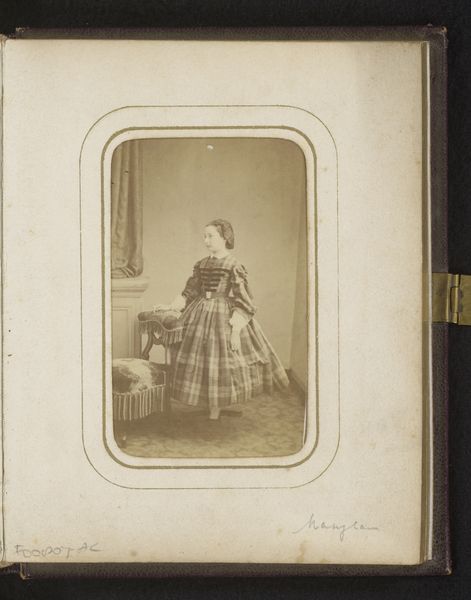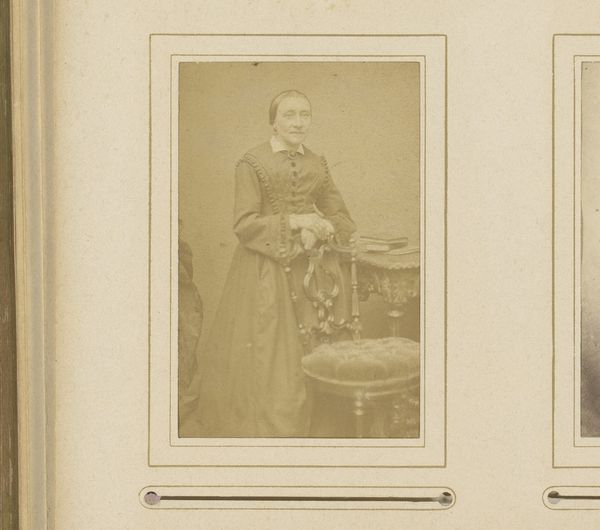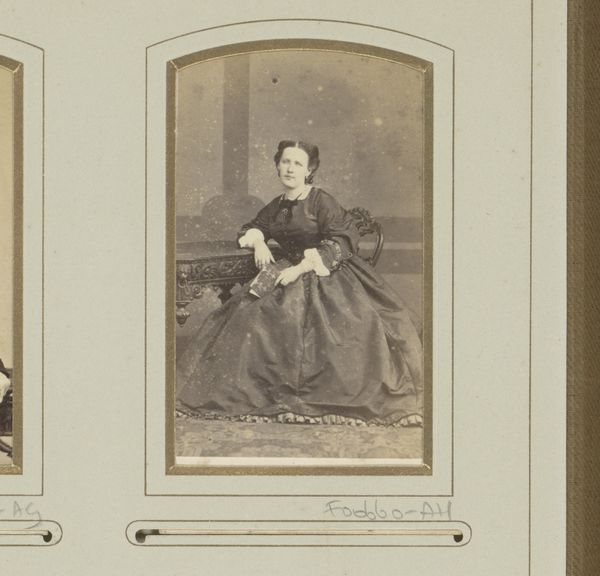
Dimensions: height 81 mm, width 49 mm
Copyright: Rijks Museum: Open Domain
Veuve J. van Koningsveld, a Dutch photographer, made this portrait using a photographic process. It's a small albumen print, a process popular in the 19th century involving coating paper with egg white to create a glossy surface for the photograph. Consider the labor involved; preparing the glass plate negative, sensitizing the paper, making the exposure, and finally, meticulously printing the image. Each step required skill and precision. The resulting sepia tone is characteristic of the materials used. Photography democratized portraiture, making images accessible to a broader segment of society. The sitter’s dress indicates her middle-class status, a social stratum that benefited from the industrial revolution and advancements in photographic technology. Understanding this artwork requires us to look beyond its surface appearance. The materials, the photographic process, and the social context are all interwoven, reminding us that art is not just about the final image, but also about the means of its production and the world in which it was created.
Comments
No comments
Be the first to comment and join the conversation on the ultimate creative platform.
